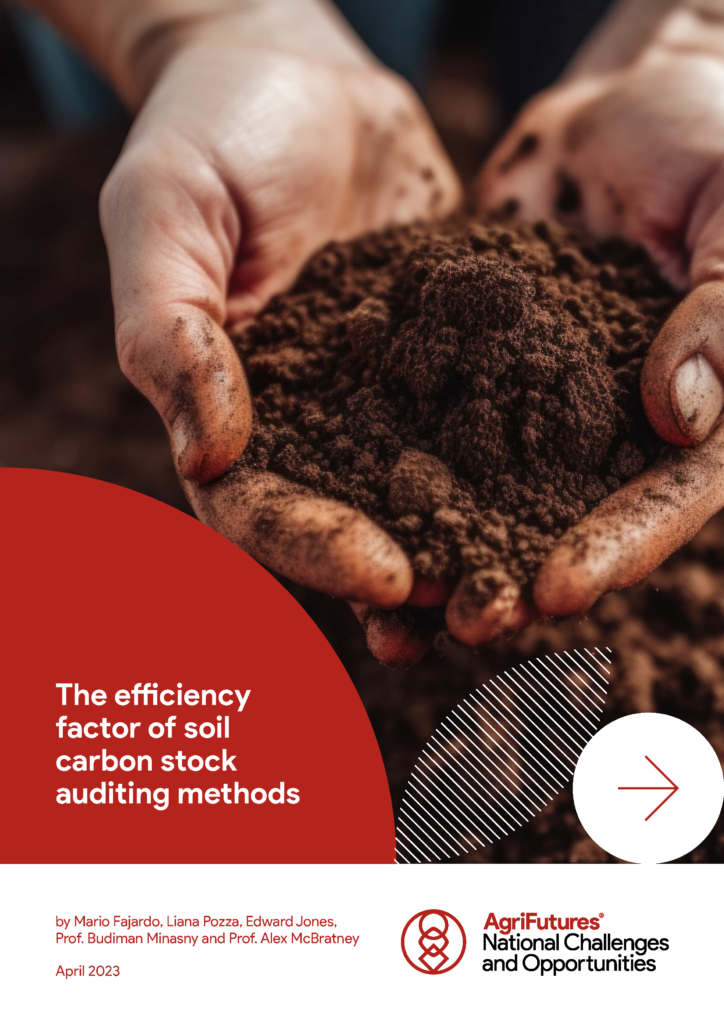This project focused on the entry point for starting a soil carbon sequestration activity on farm, including the cost of soil sampling and potential uncertainty of the measurement method for soil carbon. Typically, soil sampling is a significant cost associated with a soil carbon program. Thus, reducing the sampling variance will likely result in increases in net profit from carbon farming sites.
This research project has concluded the following: (1) Before starting a soil carbon accreditation project, the variability (coefficient of variability per unit area) should be lower than 0.01 and the area ideally more than 1,000 ha to achieve a low sampling cost per hectare per year ($3/ha/year); (2) when using a soil carbon measurement method, the most critical factor to consider is sampling variance; and (3) the use of proximally sensed predictions (on-ground sampling) together with remotely sensed data (DIF) provides an opportunity to reduce sampling costs and lower uncertainty.





